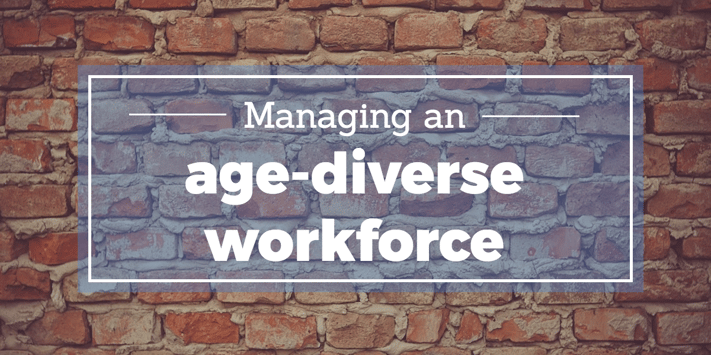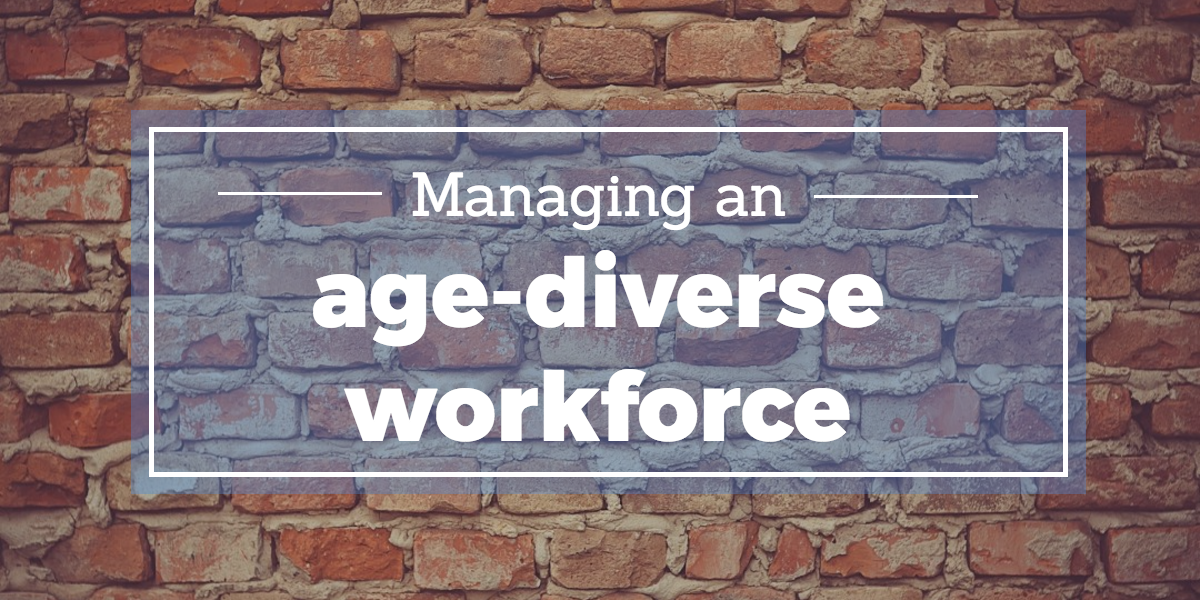
Maybe it’s medical advancements that allow people to stay healthier and live longer. Maybe it’s the rising price of retirement and the uncertainty about the sustainability of Social Security. Maybe it’s a shift in cultural attitudes about aging. Whatever the cause (or combination of causes), it’s becoming more and more common for Baby Boomers to delay or entirely forego retirement. Instead, they’re continuing to participate in the workforce long past the age their parents did.
For some, this means staying in the same position or industry as they have for their whole career. For others, it involves shifting gears and trying their hand at an “encore career” in a different field. Either way, it usually involves highly tenured employees working alongside significantly younger people, including new graduates with no corporate experience.
These multi-generational workplaces come with some challenges for managers. For older managers, it can be tough to communicate effectively with younger employees from a different generation and worldview. Likewise, younger managers may find it difficult to know how to engage with and motivate older employees who may feel chronically overlooked and underestimated.
However, an age-diverse workforce also presents some exciting prospects for employers. The variety of experience, ideas, and problem-solving approaches that diverse coworkers bring to a team can make this arrangement incredibly successful and productive. But getting it right depends on wise management and an open mind. Here are some ways to ensure a successful experience for all involved colleagues:
Don’t assume
Your assumptions about colleagues influence the way you treat them and the kinds of assignments you give them. It can be helpful to recognize that unconscious ageism may factor into some of your attitudes so that you can be on the lookout for any conclusions you draw based on limited or flawed evidence.
Remember that not all younger workers are flexible, creative, and open-minded about new ideas or work styles. Likewise, not all older workers are set in their ways, coasting on past successes, or riding out the last few years until retirement. Wise managers get positive results by taking the time to know each employee’s individual strengths and weaknesses, and coaching them toward their goals and potential.
Be flexible
Providing flexibility in the time and place your employees get their work done is now widely understood to be crucial for attracting and keeping the best employees from any background or generation. This allows all staff members to participate in the workplace while also managing important aspects of their personal lives, whether that’s caring for young children or aging parents. As a recruitment or retention strategy, building flexibility into your company culture—even if it’s never been a factor in the past—should be a top priority.
Provide opportunities for multi-generational teamwork
Intentionally building age-diverse teams is great for morale in the workplace, since it allows people who may not have otherwise gotten to know each other to work closely. However, it’s not just about helping everyone get along and become friends; diversity is also great for productivity, and sharpens employees’ skill sets. People with varied perspectives and levels of experience can learn from each others’ different approaches and attitudes toward their work.
More seasoned employees provide perspective, skill, and experience that may help their younger counterparts manage their job responsibilities appropriately. Younger employees may bring different approaches to common work problems, since they don’t yet have entrenched ways of handling them. Both parties benefit from the chance to challenge and motivate one another. That’s why strong managers should look for opportunities for intergenerational teams to collaborate on projects whenever possible.
As the age makeup in the average workplace continues to shift, it’s important for company leaders to recognize the exciting potential of a diverse staff. Combining people with various perspectives and levels of experience is a great way to break through stubborn and difficult-to-solve problems. A well-rounded staff is worth working through any initial awkwardness or misunderstandings that may come up.
